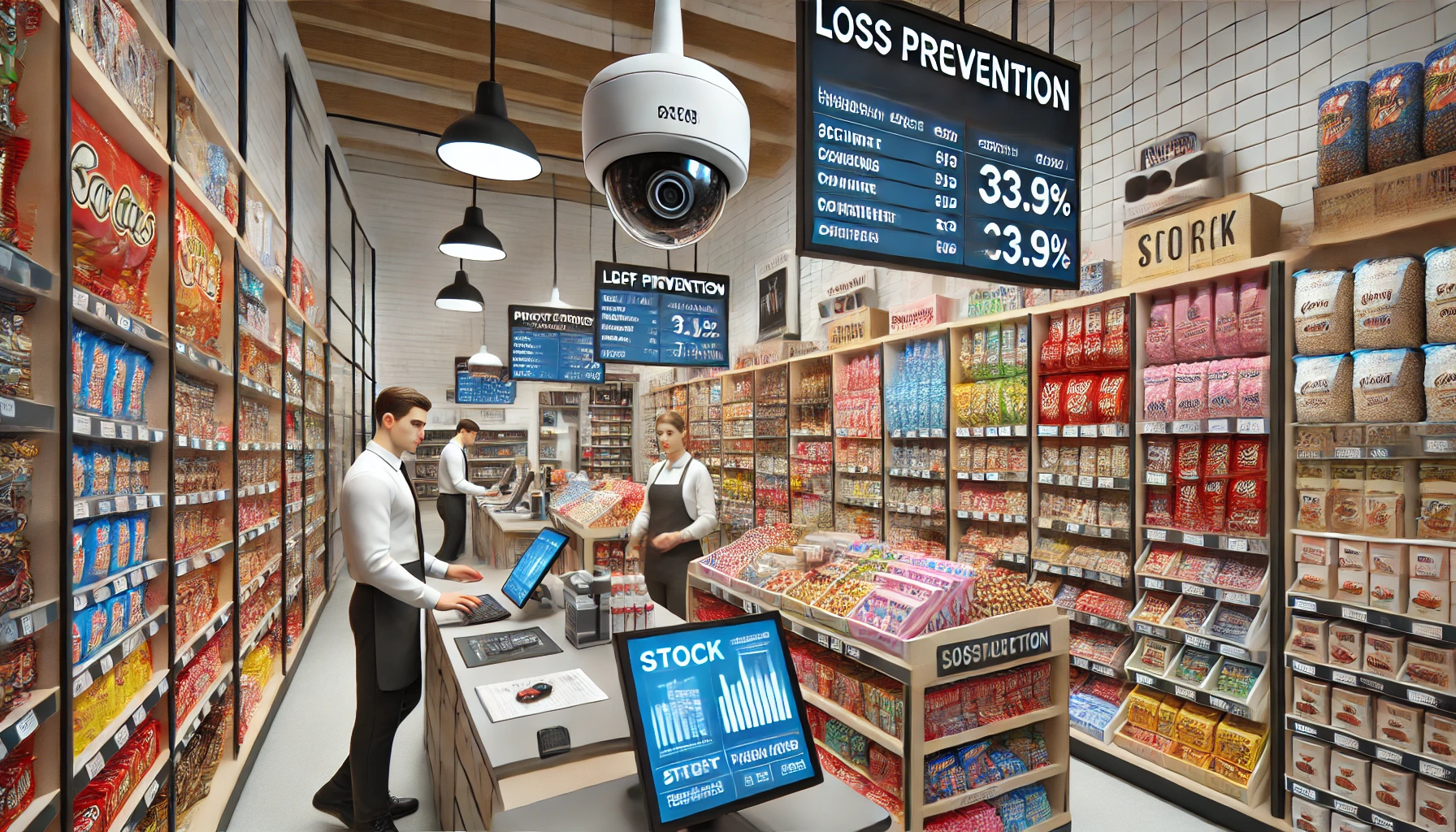Candy shops, or bombonieres, are attractive retail businesses due to their wide variety of products, ranging from chocolates and candies to snacks and beverages. However, like any retail establishment, they are vulnerable to losses caused by theft, expired products, and operational inefficiencies. Implementing loss prevention strategies is essential to ensure profitability and business sustainability.
This article explores the best practices for loss prevention in candy shops, helping owners and managers reduce financial losses and improve operational control.
Common Causes of Losses in Candy Shops
Several factors contribute to financial losses in candy shops, including:
- Theft and shoplifting: Small, high-demand items are easy targets for shoplifters.
- Expired products: Poor inventory management leads to unnecessary waste.
- Operational errors: Mistakes in pricing, stock control, and handling of goods.
- Fraud and employee theft: Lack of monitoring can result in internal losses.
- Improper storage conditions: Heat and humidity can damage chocolates and candies, reducing their shelf life.
Best Strategies for Loss Prevention in Candy Shops
To minimize losses and optimize operations, it is crucial to adopt strategic measures. Below are some key actions:
1. Inventory Control and Expiration Management
- Implement a stock rotation system, such as FIFO (First In, First Out), to ensure older products are sold first.
- Use inventory management software to track product movement and prevent overstocking.
- Conduct regular inventory audits to identify discrepancies and prevent stock shrinkage.
2. Theft Prevention Measures
- Install security cameras in key areas, including cash registers and product shelves.
- Train employees to identify suspicious behavior and handle theft situations properly.
- Arrange high-value and small-sized items in secured or monitored locations to deter theft.
- Use electronic anti-theft tags on premium products to prevent shoplifting.
3. Proper Product Handling and Storage
- Maintain optimal temperature and humidity control to avoid damage to chocolates and delicate items.
- Use airtight containers for bulk products to prevent contamination and spoilage.
- Train employees on proper handling to reduce waste and product damage.
4. Efficient Pricing and Promotion Strategies
- Offer discounts on products nearing expiration to reduce waste and encourage sales.
- Create combo deals to promote slow-moving items and increase turnover.
- Use dynamic pricing strategies based on demand, expiration dates, and seasonal trends.
5. Employee Training and Monitoring
- Educate staff on loss prevention best practices, including handling inventory and preventing theft.
- Establish clear protocols for cash handling and sales transactions.
- Monitor employee performance with transaction tracking systems to detect irregularities.
The Role of Technology in Loss Prevention
Investing in modern technology enhances security and efficiency in candy shops. Some key technological solutions include:
- Point-of-sale (POS) systems that track inventory in real-time.
- Barcode scanners for accurate stock management.
- Cloud-based inventory software for remote monitoring and data analytics.
- AI-powered surveillance systems to detect suspicious activities automatically.
Benefits of Effective Loss Prevention
Implementing structured loss prevention measures results in several advantages, including:
- Reduced financial losses due to theft and waste.
- Increased product freshness, enhancing customer satisfaction.
- Optimized inventory turnover, preventing overstocking and expired goods.
- Improved operational efficiency, leading to higher profitability.
Conclusion
Loss prevention in candy shops is essential for ensuring business sustainability and profitability. By adopting strategies such as inventory control, theft prevention, employee training, and the use of technology, shop owners can minimize losses and improve overall efficiency.
With the right preventive measures, a candy shop can maximize revenue, enhance customer trust, and maintain a competitive edge in the retail market. Investing in loss prevention is not just about reducing theft—it’s about creating a more organized, efficient, and profitable business.
